Text
Looking at the tumblrs I'm following and most were last updated years ago. Just like me.
I wish I could still write like before.
8 notes
·
View notes
Photo
This is splendid!!! <3
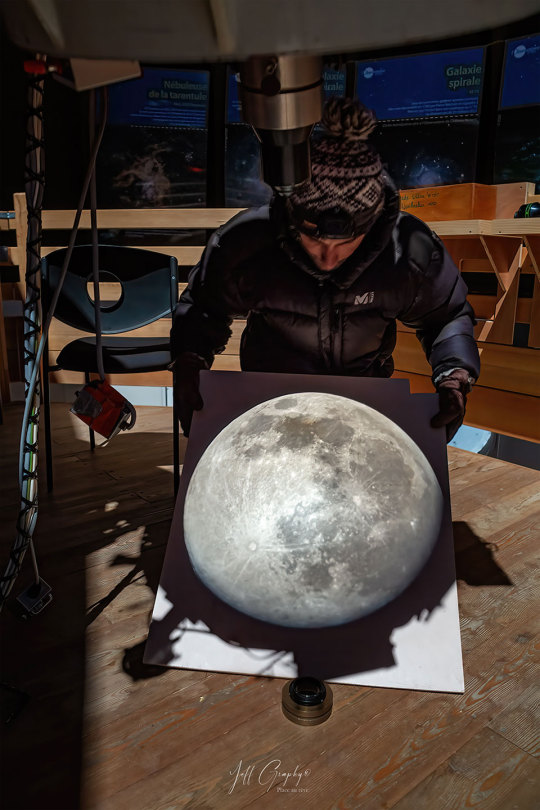
2022 February 28
Direct Projection: The Moon in My Hands
Image Credit & Copyright: Jeff Graphy
Explanation: You don’t have to look through a telescope to know where it’s pointing. Allowing the telescope to project its image onto a large surface can be useful because it dilutes the intense brightness of very bright sources. Such dilution is useful for looking at the Sun, for example during a solar eclipse. In the featured single-exposure image, though, it is a too-bright full moon that is projected. This February full moon occurred two weeks ago and is called the Snow Moon by some northern cultures. The projecting instrument is the main 62-centimeter telescope at the Saint-Véran Observatory high in the French Alps. Seeing a full moon directly is easier because it is not too bright, although you won’t see this level of detail. Your next chance will occur on March 17.
∞ Source: apod.nasa.gov/apod/ap220228.html
50 notes
·
View notes
Photo
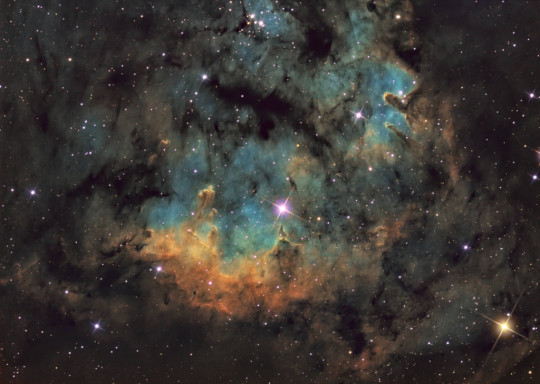
2022 January 20
NGC 7822 in Cepheus
Image Credit & Copyright: Mark Carter
Explanation: Hot, young stars and cosmic pillars of gas and dust seem to crowd into NGC 7822. At the edge of a giant molecular cloud toward the northern constellation Cepheus, the glowing star forming region lies about 3,000 light-years away. Within the nebula, bright edges and dark shapes stand out in this colorful telescopic skyscape. The image includes data from narrowband filters, mapping emission from atomic oxygen, hydrogen, and sulfur into blue, green, and red hues. The emission line and color combination has become well-known as the Hubble palette. The atomic emission is powered by energetic radiation from the central hot stars. Their powerful winds and radiation sculpt and erode the denser pillar shapes and clear out a characteristic cavity light-years across the center of the natal cloud. Stars could still be forming inside the pillars by gravitational collapse but as the pillars are eroded away, any forming stars will ultimately be cutoff from their reservoir of star stuff. This field of view spans about 40 light-years at the estimated distance of NGC 7822.
∞ Source: apod.nasa.gov/apod/ap220120.html
73 notes
·
View notes
Photo
<3
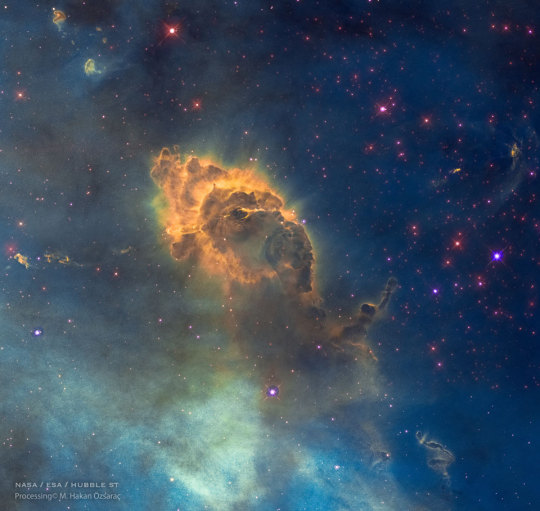
2021 December 14
HH 666: Carina Dust Pillar with Jet
Image Credit: NASA, ESA, Hubble; Processing & Copyright: Mehmet Hakan Özsaraç
Explanation: To some, it may look like a beehive. In reality, the featured image from the Hubble Space Telescope captures a cosmic pillar of dust, over two-light years long, inside of which is Herbig-Haro 666 – a young star emitting powerful jets. The structure lies within one of our galaxy’s largest star forming regions, the Carina Nebula, shining in southern skies at a distance of about 7,500 light-years. The pillar’s layered outline are shaped by the winds and radiation of Carina’s young, hot, massive stars, some of which are still forming inside the nebula. A dust-penetrating view in infrared light better shows the two, narrow, energetic jets blasting outward from a still hidden infant star.
∞ Source: apod.nasa.gov/apod/ap211214.html
60 notes
·
View notes
Photo
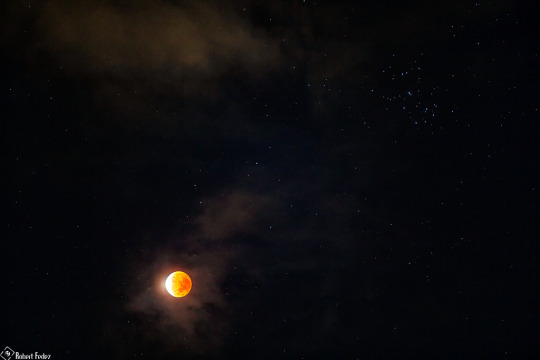
2021 November 20
An Almost Total Lunar Eclipse
Image Credit & Copyright: Robert Fedez
Explanation: Predawn hours of November 19 found the Moon in partly cloudy skies over Cancun, Mexico. Captured in this telephoto snapshot, the lunar disk is not quite entirely immersed in Earth’s dark umbral shadow during a long partial lunar eclipse. The partial eclipse was deep though, deep enough to show the dimmed but reddened light in Earth’s shadow. That’s a sight often anticipated by fans of total lunar eclipses. Wandering through the constellation Taurus, the eclipsed Moon’s dimmer light also made it easier to spot the Pleiades star cluster. The stars of the Seven Sisters share this frame at the upper right, with the almost totally eclipsed Moon.
∞ Source: apod.nasa.gov/apod/ap211120.html
59 notes
·
View notes
Photo
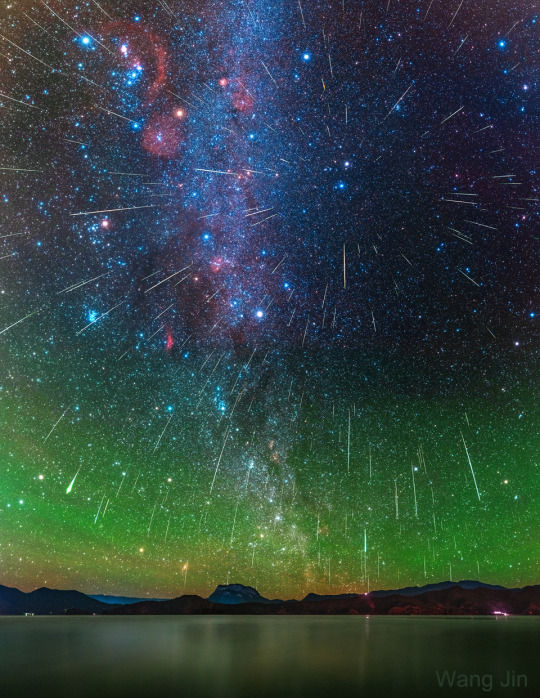
2021 November 16
Geminids from Gemini
Image Credit & Copyright: Wang Jin
Explanation: Where are all of these meteors coming from? In terms of direction on the sky, the pointed answer is the constellation of Gemini. That is why the major meteor shower in December is known as the Geminids – because shower meteors all appear to come from a radiant toward Gemini. Three dimensionally, however, sand-sized debris expelled from the unusual asteroid 3200 Phaethon follows a well-defined orbit about our Sun, and the part of the orbit that approaches Earth is superposed in front of the constellation of Gemini. Therefore, when Earth crosses this orbit, the radiant point of falling debris appears in Gemini. Featured here, a composite of many images taken during the 2020 Geminids meteor shower shows over 200 bright meteorss that streaked through the sky during the night December 14. The best meteor shower in November, the Leonids, peaks tonight and tomorrow. Unfortunately, this year, dim meteors during the early-morning peak will be hard to see against a sky lit by a bright gibbous moon. Still, a few bright Leonid meteors should be visible each hour.
∞ Source: apod.nasa.gov/apod/ap211116.html
54 notes
·
View notes
Note
I got a cat
If that means you're happy, I'm glad to hear it. :)
0 notes
Photo
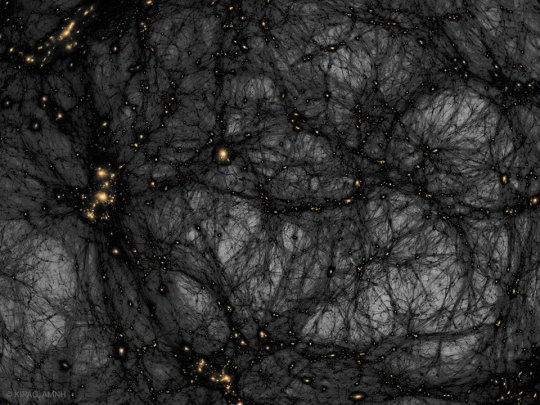
2021 October 31
Dark Matter in a Simulated Universe
Illustration Credit & Copyright: Tom Abel & Ralf Kaehler (KIPAC, SLAC), AMNH
Explanation: Is our universe haunted? It might look that way on this dark matter map. The gravity of unseen dark matter is the leading explanation for why galaxies rotate so fast, why galaxies orbit clusters so fast, why gravitational lenses so strongly deflect light, and why visible matter is distributed as it is both in the local universe and on the cosmic microwave background. The featured image from the American Museum of Natural History’s Hayden Planetarium Space Show Dark Universe highlights one example of how pervasive dark matter might haunt our universe. In this frame from a detailed computer simulation, complex filaments of dark matter, shown in black, are strewn about the universe like spider webs, while the relatively rare clumps of familiar baryonic matter are colored orange. These simulations are good statistical matches to astronomical observations. In what is perhaps a scarier turn of events, dark matter – although quite strange and in an unknown form – is no longer thought to be the strangest source of gravity in the universe. That honor now falls to dark energy, a more uniform source of repulsive gravity that seems to now dominate the expansion of the entire universe.
∞ Source: apod.nasa.gov/apod/ap211031.html
68 notes
·
View notes
Text
Isn't that great to know...

Studies show humblebragging comes off as insincere and makes people like you less than if you just shamelessly self-promote. Source Source 2
646 notes
·
View notes
Photo

2021 October 6
M43: Streams of Orion
Image Credit & Copyright: Jari Saukkonen
Explanation: Where do the dark streams of dust in the Orion Nebula originate? This part of the Orion Molecular Cloud Complex, M43, is the often imaged but rarely mentioned neighbor of the more famous M42. M42, seen in part to the upper right, includes many bright stars from the Trapezium star cluster. M43 is itself a star forming region that displays intricately-laced streams of dark dust – although it is really composed mostly of glowing hydrogen gas. The entire Orion field is located about 1600 light years away. Opaque to visible light, the picturesque dark dust is created in the outer atmosphere of massive cool stars and expelled by strong outer winds of protons and electrons.
∞ Source: apod.nasa.gov/apod/ap211006.html
54 notes
·
View notes
Photo
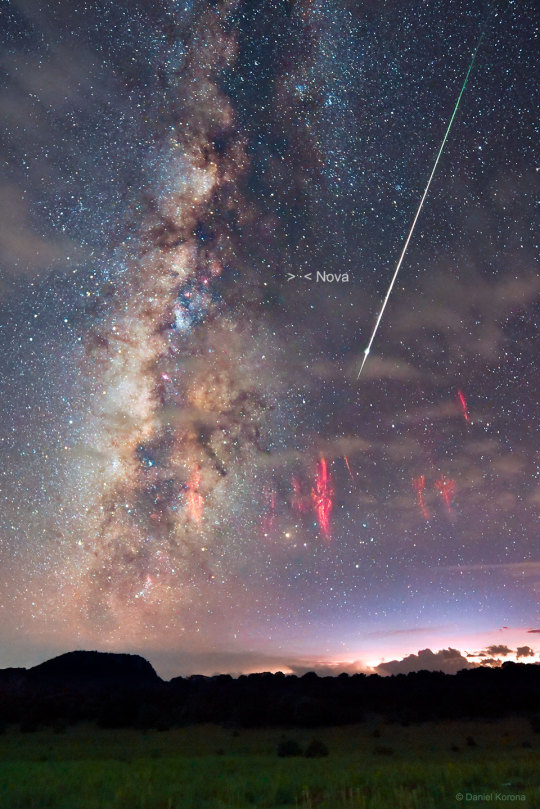
2021 August 16
Perseid Meteor, Red Sprites, and Nova RS Ophiuchus
Image Credit & Copyright: Daniel Korona
Explanation: This was an unusual sky. It wasn’t unusual because of the central band the Milky Way Galaxy, visible along the image left. Most dark skies show part of the Milky Way. It wasn’t unusual because of the bright meteor visible on the upper right. Many images taken during last week’s Perseid Meteor Shower show meteors, although this Perseid was particularly bright. This sky wasn’t unusual because of the red sprites, visible on the lower right. Although this type of lightning has only been noted in the past few decades, images of sprites are becoming more common. This sky wasn’t unusual because of the nova, visible just above the image center. Novas bright enough to be seen with the unaided eye occur every few years, with pictured Nova RS Ophiuchus discovered about a week ago. What was most unusual, though, was to capture all these things together, in a single night, on a single sky. The unusual sky occurred above Zacatecas, Mexico.
∞ Source: apod.nasa.gov/apod/ap210816.html
56 notes
·
View notes
Photo
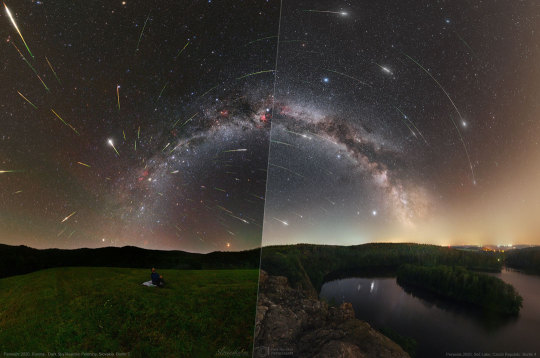
2021 August 9
Perseus and the Lost Meteors
Image Credit & Copyright: Tomas Slovinsky (Slovakia) & Petr Horalek (Czech Republic; Institute of Physics in Opava)
Explanation: What’s the best way to watch a meteor shower? This question might come up later this week when the annual Perseid Meteor Shower peaks. One thing that is helpful is a dark sky, as demonstrated in the featured composite image of last year’s Perseids. Many more faint meteors are visible on the left image, taken through a very dark sky in Slovakia, than on the right image, taken through a moderately dark sky in the Czech Republic. The band of the Milky Way Galaxy bridges the two coordinated images, while the meteor shower radiant in the constellation of Perseus is clearly visible on the left. In sum, many faint meteors are lost through a bright sky. Light pollution is shrinking areas across our Earth with dark skies, although inexpensive ways to combat this might be implemented.
∞ Source: apod.nasa.gov/apod/ap210809.html
33 notes
·
View notes
Photo
What, it doesn't explode in a fiery ball of flames we've seen on movies? Impossible!

2021 August 10
Fire in Space
Image Credit: NASA
Explanation: What does fire look like in space? In the gravity on Earth, heated air rises and expands, causing flames to be teardrop shaped. In the microgravity of the air-filled International Space Station (ISS), however, flames are spheres. Fire is the rapid acquisition of oxygen, and space flames meet new oxygen molecules when they float by randomly from all directions – creating the enveloping sphere. In the featured image taken in the ISS’s Combustion Integration Rack, a spherical flame envelopes clusters of hot glowing soot. Without oxygen, say in the vacuum of empty space, a fire would go out immediately. The many chemical reactions involved with fire are complex, and testing them in microgravity is helping humanity not only to better understand fire – but how to put out fire, too.
∞ Source: apod.nasa.gov/apod/ap210810.html
151 notes
·
View notes
Photo
Perseids <3
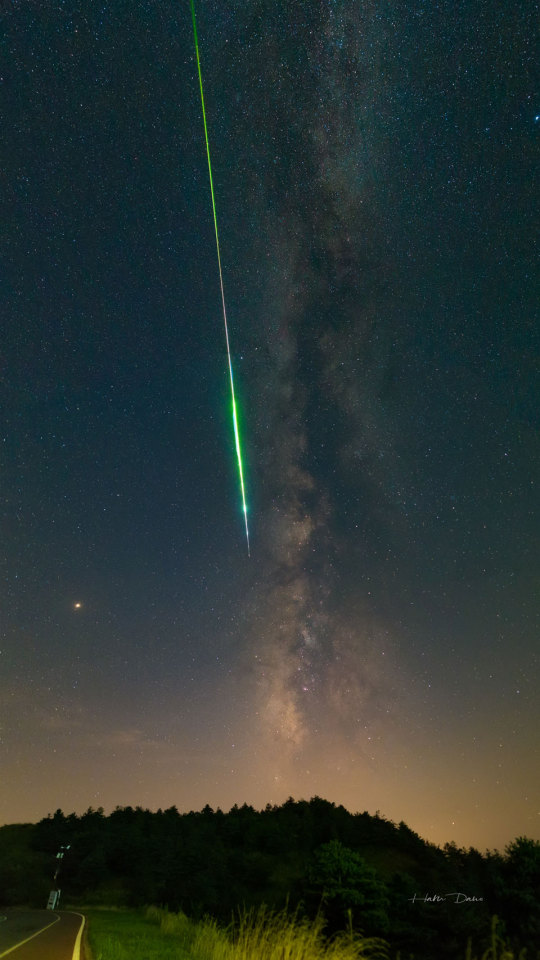
2021 August 3
A Perseid Fireball and the Milky Way
Image Credit & Copyright: Dandan Huang
Explanation: It was bright and green and flashed as it moved quickly along the Milky Way. It left a trail that took 30 minutes to dissipate. Given the day, August 12, and the direction, away from Perseus, it was likely a small bit from the nucleus of Comet Swift-Tuttle plowing through the Earth’s atmosphere – and therefore part of the annual Perseids meteor shower. The astrophotographer captured the fireball as it shot across the sky in 2018 above a valley in Yichang, Hubei, China. The meteor’s streak, also caught on video, ended near the direction of Mars on the lower left. Next week, the 2021 Perseids meteor shower will peak again. This year the Moon will set shortly after the Sun, leaving a night sky ideal for seeing lots of Perseids from dark and clear locations across planet Earth.
∞ Source: apod.nasa.gov/apod/ap210803.html
94 notes
·
View notes
Photo

2021 July 29
The Tulip and Cygnus X-1
Image Credit & Copyright: Carlos Uriarte
Explanation: This tall telescopic field of view looks out along the plane of our Milky Way Galaxy toward the nebula rich constellation Cygnus the Swan. Popularly called the Tulip Nebula, the brightest glowing cloud of interstellar gas and dust above center is also found in the 1959 catalog by astronomer Stewart Sharpless as Sh2-101. Nearly 70 light-years across the complex and beautiful Tulip Nebula blossoms about 8,000 light-years away, shown in a Hubble palette image that maps the glow of the nebula’s sulfur, hydrogen, and oxygen ions into red, green, and blue colors. Ultraviolet radiation from young energetic stars at the edge of the Cygnus OB3 association, including O star HDE 227018, ionizes the atoms and powers the emission from the Tulip Nebula. Also in the field of view is microquasar Cygnus X-1, one of the strongest X-ray sources in planet Earth’s sky. Driven by powerful jets from a black hole accretion disk, its fainter bluish curved shock front is only just visible though, directly above the cosmic Tulip’s petals near the top of the frame.
∞ Source: apod.nasa.gov/apod/ap210729.html
57 notes
·
View notes
Text
Oh, so THAT is why I am like this now...

Pulling an all-nighter kills your brain cells.
Source
859 notes
·
View notes
